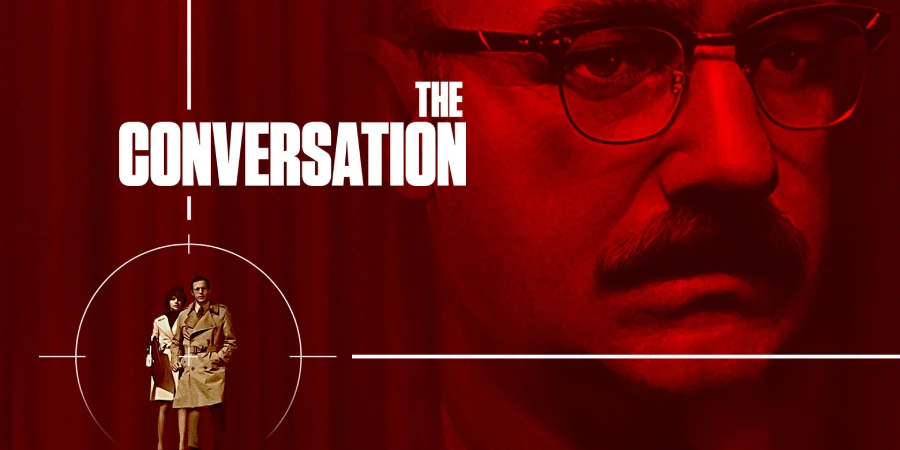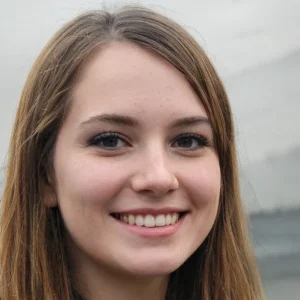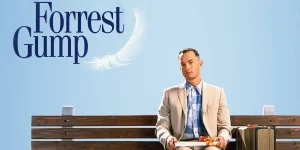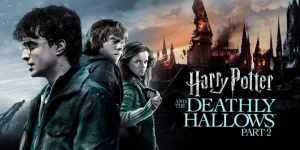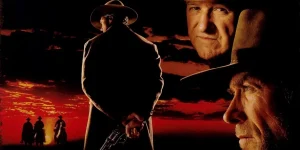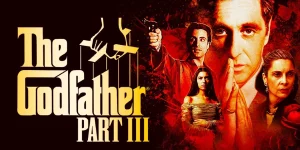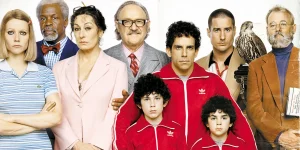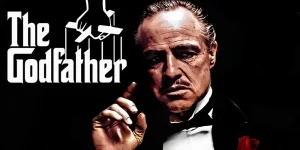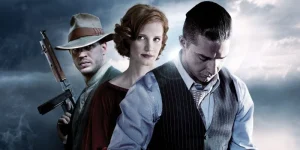Francis Ford Coppola’s The Conversation (1974) is a slow-burn psychological thriller that doubles as a chilling character study about surveillance, paranoia, and guilt. It sits between The Godfather (1972) and The Godfather Part II (1974) in Coppola’s career, and though smaller in scale, it’s considered one of his most meticulous works.
Table of Contents
ToggleDetailed Summary
The Opening: Surveillance in the Park
The film opens with a long surveillance sequence in San Francisco’s Union Square. Harry Caul (played by Gene Hackman), a professional surveillance expert, and his team are recording a young couple (Cindy Williams and Frederic Forrest) as they walk and talk. The team uses multiple microphones, long lenses, and parabolic devices to capture fragments of their conversation. At first, the dialogue seems harmless, but there’s a sense of unease in Harry’s obsession with reconstructing it.
Harry Caul: The Isolated Observer
Harry is a solitary man. He’s extremely private, paranoid about being spied on himself, and emotionally disconnected. Even his personal relationships are strained: his girlfriend feels shut out of his life, and he avoids intimacy for fear of vulnerability. This is key to understanding Harry—he’s a man who listens to others’ lives but refuses to live his own.
The Job Gets Complicated
Harry delivers the recordings to his client’s assistant (played by Harrison Ford in an early role). But something about the conversation troubles him. After replaying and refining the tapes, Harry picks up on a cryptic line: “He’d kill us if he got the chance.” Harry becomes convinced that the couple is in danger and that his work may be facilitating a murder.
Harry’s Guilt and Paranoia
Harry recalls a previous job where his surveillance indirectly led to people being killed. Haunted by that mistake, he becomes consumed with preventing the same tragedy from happening again. His paranoia grows—he suspects everyone, and he even fears his own surveillance equipment might be turned against him.
Movie Ending
The climax unfolds when Harry sneaks into a hotel to keep an eye on the couple. From his room, he hears a violent struggle in the neighboring room. Believing he has just witnessed (or at least overheard) a murder, Harry is horrified. But when he later learns the outcome, his assumptions unravel.
It’s revealed that the couple was not the target—rather, they were the perpetrators. The cryptic line “He’d kill us if he got the chance” meant something very different than Harry assumed. Instead of being victims, the couple kills the powerful corporate director who had hired Harry in the first place.
In the final scenes, Harry is confronted indirectly: the company knows he’s aware of too much. They send him a message through surveillance of his own apartment. Feeling violated, Harry tears apart his home—ripping up floorboards, walls, and furniture—in a desperate attempt to find the bug he believes has been planted. The film ends with Harry sitting alone, surrounded by the wreckage of his own life, playing his saxophone. His paranoia has fully consumed him, and whether or not the bug even exists remains ambiguous.
Are There Post-Credits Scenes?
No. The Conversation does not feature any post-credits scenes. It ends definitively with Harry in his destroyed apartment, leaving the viewer unsettled and reflective.
Type of Movie
The film is a psychological thriller with strong elements of neo-noir and political paranoia drama. It belongs to the same lineage of 1970s cinema that questioned government power, corporate influence, and personal privacy (think All the President’s Men or Three Days of the Condor).
Cast
- Gene Hackman as Harry Caul
- John Cazale as Stan, Harry’s assistant
- Allen Garfield as Bernie Moran, a rival surveillance man
- Cindy Williams as Ann (the young woman being recorded)
- Frederic Forrest as Mark (the young man being recorded)
- Harrison Ford as Martin Stett, assistant to the corporate director
- Robert Duvall as The Director (uncredited cameo)
Film Music and Composer
The haunting, minimalist score was composed by David Shire. It relies heavily on piano and dissonant tones, perfectly mirroring Harry’s isolation and mental fragmentation. Shire’s music is subtle yet central—it becomes part of the film’s atmosphere of paranoia.
Filming Locations
- San Francisco, California – The majority of the film was shot in San Francisco, particularly Union Square and the Jack Tar Hotel.
- The city’s open spaces (Union Square) and confined interiors (Harry’s apartment, his office) are deliberately contrasted to reflect Harry’s inner conflict: exposure versus privacy.
Awards and Nominations
- Palme d’Or at the Cannes Film Festival (1974) – Winner
- Academy Awards – Nominated for Best Picture, Best Original Screenplay, and Best Sound
- BAFTA – Nominations in several categories
Though it lost the Oscar for Best Picture to Coppola’s own The Godfather Part II, it’s still considered one of his finest achievements.
Behind the Scenes Insights
- Coppola wrote the script in the late 1960s but shelved it until technology caught up with his vision.
- The sound design was groundbreaking: editors created layers of fragmented dialogue to mirror Harry’s obsessive tape-splicing.
- Gene Hackman initially struggled with the role, feeling he was nothing like Harry Caul. Coppola encouraged him to embrace that difference.
- The film eerily anticipated the Watergate scandal and wiretapping controversies, though Coppola insists it was written before those events came to light.
Inspirations and References
- Inspired by Michelangelo Antonioni’s Blow-Up (1966), which similarly dealt with perception, interpretation, and ambiguity.
- The broader climate of 1970s America—particularly mistrust of authority and government surveillance—gave the film resonance.
Alternate Endings and Deleted Scenes
No alternate endings were ever released, but Coppola shot additional material fleshing out Harry’s relationships, later cut to maintain the film’s tight focus on surveillance and paranoia.
Book Adaptations and Differences
The film is an original screenplay, not based on a novel. However, its themes align closely with literary works about surveillance and paranoia (Kafka, Orwell, and Pynchon come to mind).
Memorable Scenes and Quotes
Key Scenes
- The fragmented surveillance in Union Square, slowly pieced together.
- Harry’s dream sequence involving Ann, blending guilt and desire.
- The hotel sequence where Harry listens to the apparent murder.
- The final scene where Harry tears apart his apartment.
Iconic Quotes
- “We’ll be listening to you.”
- “I’m not afraid of death. I am afraid of murder.”
- “He’d kill us if he got the chance.”
Easter Eggs and Hidden Details
- Harrison Ford’s role, though small, foreshadows his future prominence in thrillers.
- The shattered apartment at the end can be read as a metaphor for Harry’s psyche.
- Robert Duvall appears uncredited as the corporate director—Coppola was fond of using familiar actors in small roles.
Trivia
- Gene Hackman reprised Harry Caul in a spiritual cameo in Enemy of the State (1998), often seen as an unofficial sequel.
- The budget was relatively modest, but Coppola’s precise direction made it feel larger.
- Sound design was so innovative it’s studied in film schools as a masterclass.
Why Watch?
Watch The Conversation if you want a slow, cerebral thriller that forces you to question truth, perception, and privacy. It’s not about big explosions or car chases—it’s about tension that grows quietly until it consumes both the character and the viewer.
Director’s Other Movies
- The Godfather (1972)
- The Godfather Part II (1974)
- Apocalypse Now (1979)
- Bram Stoker’s Dracula (1992)
- The Outsiders (1983)

